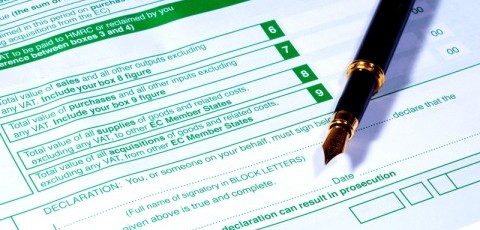Several VAT schemes are open to business owners depending on their financial profile. The flat rate scheme was created to make VAT accounting simpler for qualifying businesses, by allowing them to pay VAT at a fixed percentage of turnover rather than on a transaction by transaction basis.

Under the flat rate VAT scheme, you charge clients and customers the current standard VAT rate on all invoices (currently 20%), however you pay HMRC a flat rate of your turnover when returning VAT each quarter, and can’t reclaim for VAT paid on purchases as this is already factored in to the percentage.
The percentage you pay depends on the industry you are in and will vary according to the typical input and output VAT amounts paid by business in each industry. For example, professional service firms such as contractors, lawyers, architects and accountants currently pay a flat rate of 14.5%. You can see the current rates according to industry-type here (scroll down).
Flat rate VAT scheme – the basics
You can join the scheme if you expect your business to turnover £150,000 or less over the next 12 months. Once you have joined the scheme, your business can remain in it until turnover is greater than £230,000.
You cannot reclaim the cost of purchases, although a single one-off capital purchase of £2,000 (including VAT) or more is allowed, subject to some restrictions. This can be a single, or multiple capital goods, for the sole use of the business (and not for resale).
An extra benefit is that, during the first year your business joins the scheme, the flat rate percentage you apply is reduced by 1%.
You make no changes to the way you invoice customers. You continue to add standard VAT to all invoices. The flat rate calculations only apply to your accounts.
Pros and Cons of the flat rate scheme
The main benefit of joining the scheme is that it makes VAT bookkeeping simpler. Instead of recording VAT details for each transaction passing through your company’s books, you simply apply your percentage to the quarterly or annual turnover (depending on the calculation) to work out your VAT liability.
Whether or not you are better or worse off as a result of joining the scheme or not will depend to a great extent on the number of purchases your business makes. If you make a lot of VAT-exempt sales or make a lot of purchases, you are more likely to be better off on the standard scheme.
Obviously, your accountant will be best placed to work out your potential liability under each VAT scheme.
Further Information
You should ensure that you discuss your VAT situation with your accountant, as the flat rate scheme may or may not be financially beneficial to your particular business.
Also, consult HMRC’s guide to the flat rate scheme here.
More on getting a VAT number and getting an accountant.


Follow Company Bug